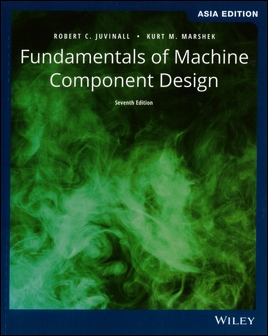書籍分類

Fundamentals of Machine Component Design 7/e
作者:Robert C. Juvinall, Kurt M. Marshek
原價:NT$ 1,850
ISBN:9781119590637
版次:7
年份:2020
出版商:John Wiley
頁數/規格:800頁/平裝單色
參考網頁:Fundamentals of Machine Component Design 7/e
版次:7
年份:2020
出版商:John Wiley
頁數/規格:800頁/平裝單色
參考網頁:Fundamentals of Machine Component Design 7/e
內容介紹 本書特色 目錄
- Description
Fundamentals of Machine Component Design presents a thorough introduction to the concepts and methods essential to mechanical engineering design, analysis, and application. In-depth coverage of major topics, including free body diagrams, force flow concepts, failure theories, and fatigue design, are coupled with specific applications to bearings, springs, brakes, clutches, fasteners, and more for a real-world functional body of knowledge. Critical thinking and problem-solving skills are strengthened through a graphical procedural framework, enabling the effective identification of problems and clear presentation of solutions.
Solidly focused on practical applications of fundamental theory, this text helps students develop the ability to conceptualize designs, interpret test results, and facilitate improvement. Clear presentation reinforces central ideas with multiple case studies, in-class exercises, homework problems, computer software data sets, and access to supplemental internet resources, while appendices provide extensive reference material on processing methods, joinability, failure modes, and material properties to aid student comprehension and encourage self-study.
分類位置:
理工 > 機械工程 > 機械工程其他


